Playstation Classic Copying Nintendo Again Sony
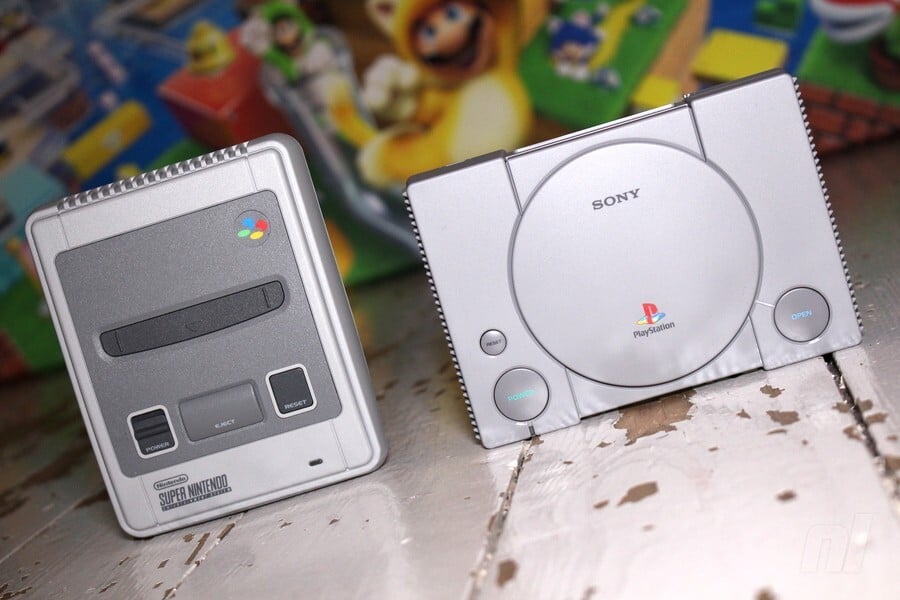
Nintendo wasn't the first company to wake up to the idea of repackaging its games in tiny versions of classic consoles – Sega and Atari (from a licencing perspective, at least) were there a long, long time ago – but its entry into this previously niche sector certainly made an impact. The NES Classic Edition and SNES Classic Edition have now sold over x million units worldwide between them, indicating all too clearly that there is a tremendous ambition for this kind of thing; little wonder then that SNK released a Neo Geo Mini earlier this year and Sega – after over a decade of allowing hardware partner AtGames to sully its good proper noun with some seriously shocking clone consoles – finally seems to be taking the whole concept a little more seriously.
2018 is also the year in which Nintendo'south rival Sony decided that its legacy was worth taking advantage of. The PlayStation Classic launched today and in many respects should exist the kind of production that appeals to gamers of all walks of life, including Nintendo players. The original 32-flake system – borne out of Sony's failed agreement with Nintendo to produce a CD-ROM-based SNES console – was the very definition of a game-changer; when it arrived in 1994 information technology arguably heralded the beginning of the 3D revolution and established a brand which has remained at the forefront of console gaming always since. To many players, the PlayStation supplanted the SNES every bit their get-to panel thanks to its impressive third-party support, an amazing catalogue of RPGs and a slew of hits from the likes of Capcom, Konami, Eidos and – of grade – former Nintendo devotee Square.
The first dwelling console to ship over 100 million units worldwide, the condition of the original PlayStation cannot be denied, making it the perfect candidate for the 'classic' treatment. But does the final production live up to expectation, and, if you have money to burn this festive flavour, is it a meliorate purchase than the SNES Classic Edition? Let's detect out…
Hardware

At that place's no getting around it, both the SNES Archetype Edition and PlayStation Classic are utterly adorable. They're perfectly-recreated versions of the original systems simply much, much smaller; they obviously lack the power to play the original games but that doesn't make them any less highly-seasoned from a purely corrective perspective. In terms of looks, the one that appeals near to you personally will no doubt be based on your cornball connection to each automobile, just nosotros're sure there are a keen many players out there who have fond recollections of both consoles, given that millions of u.s.a. transitioned from the SNES to the PlayStation back in the mid-'90s.
1 matter we practice like better almost the PlayStation Classic when compared to the SNES Classic Edition is the fact that the controllers plug straight into the forepart of the unit, whereas on Nintendo's motorcar in that location's a flap at the forepart which hides the controller ports. This makes the unit await a piddling odd when information technology's in use; we much prefer how the controller port is right on the forepart of the PlayStation Classic, and how Sony has shaped the plugs so they actually look like the real thing once connected.
Both systems are powered by an industry-standard Micro USB connection and neither comes with a power supply in the box – you'll have to use ane of the USB sockets on your Tv set or the USB power block that y'all apply with your smartphone or tablet. Both besides apply HDMI to connect to your television receiver and both output at 720p.
Rather than try to recreate the internals on a physical level, Nintendo and Sony have opted for the emulation road when it comes to replicating the performance of these machines. Inside the SNES Archetype Edition you'll detect an Allwinner R16 system-on-a-chip with iv ARM Cortex-A7 central processing units and an ARM Republic of mali 400 MP2 graphics processing unit. The PlayStation Classic as well takes the system-on-a-bit approach, boasting a MediaTek MT8167A with a quad-cadre ARM Cortex A35 running at 1.5GHz paired with a PowerVR GE8300 GPU. Both of these setups are pretty standard; this is off-the-shelf componentry rather than custom hardware, as was the norm back when the original consoles were released.
Controller

The SNES pad is iconic in that it has influenced practically every single controller released since. It was the first pad to utilise shoulder buttons, the inclusion of which gave players more than input options without crowding out the face of the pad. Speaking of which, the conclusion to adjust the buttons in a diamond formation was a masterstroke and has since get the standard for the manufacture. The pad bundled with the SNES Classic Edition is practically indistinguishable from the real thing; it looks and feels fantastic.
The aforementioned can be said of the pad that ships alongside the PlayStation Classic; information technology's an utterly faithful facsimile of the original controller, which can besides lay claim to being something of a design trendsetter. Sure, Sony copied many elements of the SNES pad (hardly surprising when you consider the origins of the whole PlayStation project) including the diamond button cluster and the shoulder buttons (now doubled from two to iv), simply it also gave players a more ergonomic design, with those ii prongs offering the perfect grip. Like the pad made for the SNES Archetype Edition, this controller feels like a quality product and when we picked it upwards for the showtime fourth dimension we were hit with some serious nostalgia feels.
Software
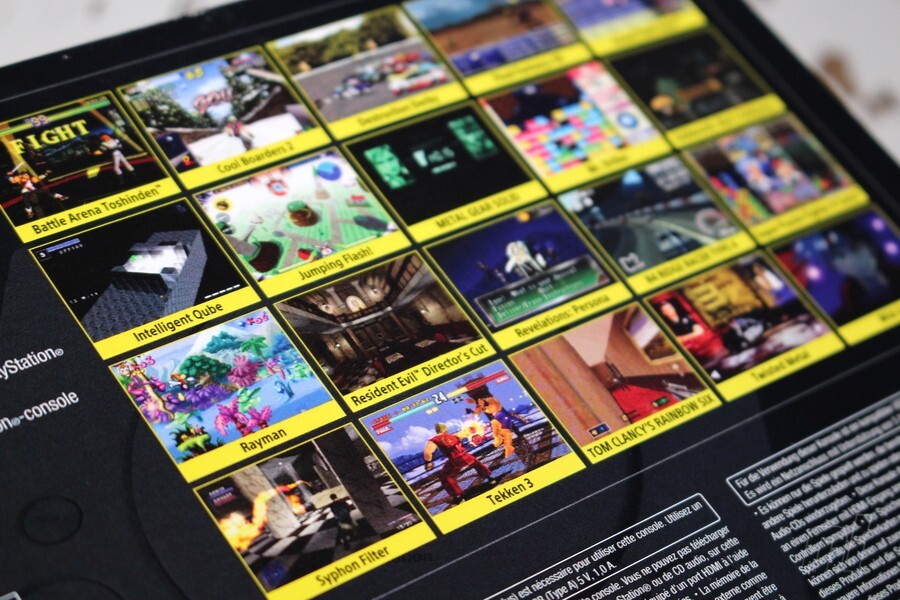
You tin tell Nintendo invested a significant amount of time and effort in picking the games it included on the SNES Classic Edition; while there are a lot of 2D platformers included, pretty much every game is a highly-rated slice of gaming goodness which has stood the test of time better than you lot might look.
Here's the full listing:
- Contra Iii: The Alien Wars
- Donkey Kong Land
- EarthBound
- Final Fantasy III / Vi
- F-Nix
- Kirby Super Star
- Kirby'south Dream Course
- The Legend of Zelda: A Link to the By
- Mega Man 10
- Undercover of Mana
- Star Fox
- Star Fox 2
- Super Castlevania Iv
- Street Fighter Ii Turbo: Hyper Fighting
- Super Ghouls 'n Ghosts
- Super Mario Kart
- Super Mario RPG: Legend of the Seven Stars
- Super Mario Globe
- Super Mario Globe 2: Yoshi'southward Island
- Super Metroid
- Super Punch-Out!!
Given the talent that resided at Nintendo back so – and continues to reside to this very mean solar day – it'south no stupor to see that the bulk of the games are first-party releases. Super Mario World remains one of the all-time 2d platformers of all time, while Zelda: A Link to the Past is effortlessly one of the finest action adventures ever made. Super Mario Kart and F-Zip utilise the panel's Mode-7 visual effect superbly, while Star Fox – adult aslope United kingdom studio Argonaut, who likewise created the Super FX accelerator chip – gave many gamers their showtime taste of 3D gaming.
Nintendo did include some third-political party efforts, such as the sublime Contra III and Castlevania 4 from Konami and the likes of Final Fantasy III, Secret of Mana and Super Mario RPG: Legend of the Seven Stars from Square. Capcom's Street Fighter Ii Turbo: Hyper Fighting, Mega Man X and Super Ghouls 'northward Ghosts showcase how well the company adapted to the 16-bit system. With the possible exception of Kirby's Dream Course, every single game included on the SNES Archetype Edition is worthy of being considered a must-play experience; sure, at that place are many amazing games that didn't make the cut but ultimately, this is as good a selection equally you could reasonably hope for – and the fact that Nintendo went the extra mile and included the previously unreleased Star Fob 2 is simply the icing on the cake.
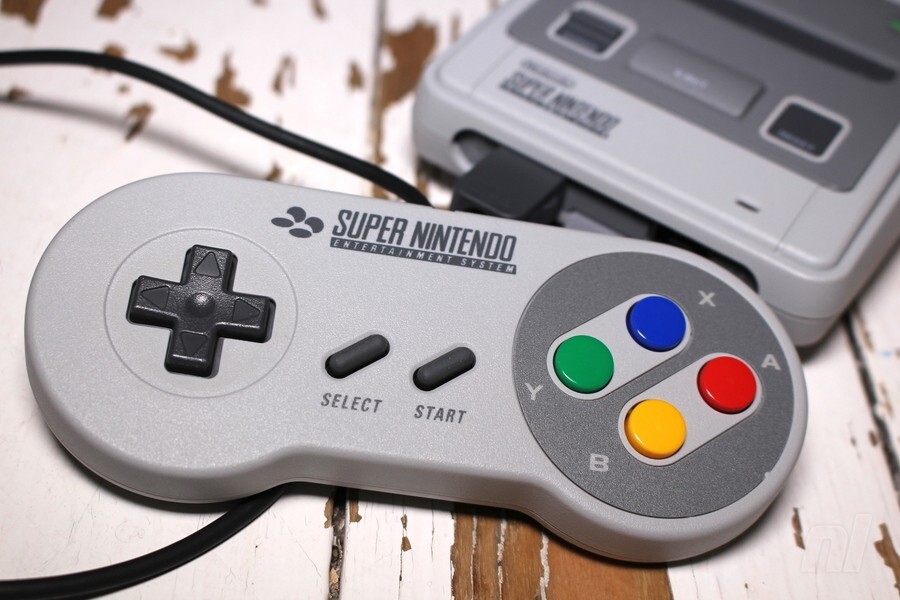
Given that the SNES and PlayStation are from two different hardware generations, it might seem like a foregone conclusion that Sony's automobile wins out in this item category – especially when you consider that the bound from 2nd to 3D is maybe the most revolutionary the industry has always seen. The 32-flake era allowed for increased immersion and realism cheers to the introduction of powerful hardware which was designed with real-fourth dimension, three-dimensional graphics in mind; the resultant titles offered a visual boost that left 16-bit machines like the SNES and Mega Drive in the dust – although, equally many critics commented at the time, it was often the case that fancy 3D was used to mask the fact that a great many 32-bit games were no more playable than their second forerunners.
Even so, the PlayStation library is packed with truly amazing pieces of software – and narrowing down the option of xx games included with the PlayStation Classic would exist a thankless chore in anyone's book. Much has already been on the games Sony has picked for this car, suffice to say information technology's a varied – if perhaps not definitive – snapshot of the console's legacy.
Here are the games included on the western version of the machine (the Japanese variant has some slight differences):
- Battle Arena Toshinden
- Absurd Boarders 2
- Destruction Derby
- Last Fantasy VII
- Thou Theft Auto
- Intelligent Qube
- Jumping Wink!
- Metal Gear Solid
- Mr. Driller
- Oddworld: Abe's Oddysee
- Rayman
- Resident Evil Manager's Cutting
- Revelations: Persona
- Ridge Racer Blazon 4
- Super Puzzle Fighter II Turbo
- Syphon Filter
- Tekken 3
- Tom Clancy'due south Rainbow Six
- Twisted Metal
- Wild Arms
Before we stick the boot in equally so many others have already done, information technology's worth noting that there are some solid-gilded gems on offer here. Final Fantasy Vii is widely-regarded every bit one of the best video games of all time, while the original Metal Gear Solid remains playable and atmospheric, even if its subsequent sequels have drastically enhanced the cadre premise of 'tactical espionage activity'. Ridge Racer Type four presents some blissfully enjoyable arcade racing, and Revelations: Persona – a proper cult classic which is made even more interesting when you consider how pop the series has become in the west of late – will keep you lot glued to the console for weeks. Tekken 3 is too a solid choice and shows that the core gameplay of Namco'due south famous fighting series is almost timeless.
Furthermore, while titles like Jumping Flash, Super Puzzle Fighter II Turbo, Mr. Driller and Intelligent Qube might not be everyone's thought of must-have AAA PlayStation releases, they're incredibly fun and could well rank equally some of your most-played games if you do decide to invest in this machine. We have a soft spot for Jumping Wink in detail, thanks largely to the fact that information technology was the game we got with our PlayStation dorsum in 1995 and is one of the first 'truthful' 3D platformers, pre-dating even the mighty Super Mario 64.
However, when you first to dig a lilliputian deeper into the PlayStation Classic's line-upwards, the cracks actually kickoff to show. Nosotros can't imagine there were many people who considered Tom Clancy's Rainbow Half-dozen to be an 'essential' purchase dorsum at the fourth dimension of release, so we're at a loss as to explain why information technology'due south included here. Likewise, Battle Loonshit Toshinden was attacked at the time of launch for putting showy visuals above actual gameplay, and the passage of fourth dimension has just served to lessen the affect of its graphics and expose its terribly clunky mechanics even more clearly. Devastation Derby is fun in short bursts but feels like a relic, while Cool Boarders ii pales in comparison to Nintendo'due south 1080 Snowboarding, its contemporary rival.
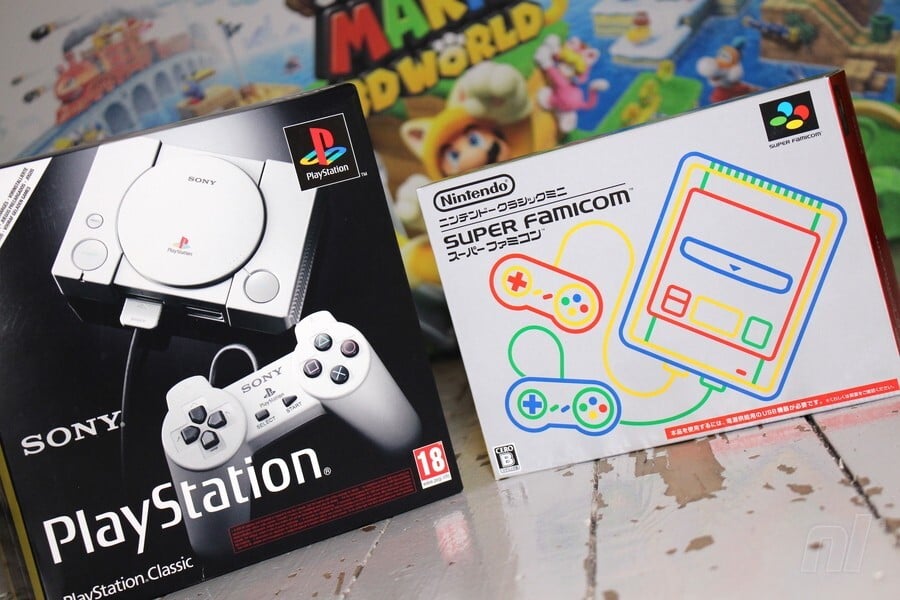
Meanwhile, Syphon Filter, Twisted Metal and even the legendary Resident Evil have all aged surprisingly badly, a consequence of the fact that this evolutionary menses in gaming is packed with crude 3D graphics that were simply accepted dorsum and then because we didn't know any better. While the 2d games seen on the SNES Classic Edition lack that sense of immersion, they've aged a little better thank you to their clean presentation; the same unfortunately cannot be said for the warped textures and indigestible, low-polygon models seen in many PlayStation games.
While Nintendo's selection of games for the SNES Classic Edition arguably cannot be faulted, Sony's picks are, in many respects, head-scratchingly baroque. Why wasn't at to the lowest degree one Wipeout entry included, for example? This racing series defined the PlayStation brand for many players, combining amazing visuals with an intense techno soundtrack. The same could be said of Gran Turismo and its sequel, two technically groundbreaking racers which are conspicuous by their absence – the original Gran Turismo is officially the biggest-selling 32-flake PlayStation game of all time, so why omit it? As well, there's no Crash Bandicoot, Tomb Raider, Last Fantasy Tactics, Castlevania: Symphony of the Night, Spyro, PaRappa the Rapper, Silent Colina, Everybody'southward Golf or Tony Militarist's Pro Skater. And what about all those fringe classics? Personal picks such as Tomba, Rival Schools, Einhander, R-Blazon Delta, Raystorm, Lunar: The Silver Star Story Consummate, Vagrant Story, Alundra, Xenogears, Ape Escape, Suikoden, Klonoa, Bushido Bract, Yard-Police or Colony Wars? There'due south an embarrassment of amazing games on the PlayStation – a fact that pained many a Nintendo stalwart dorsum in the '90s – but you wouldn't necessarily know that from the PlayStation Classic's awkward software selection.
Now, nosotros're fully aware that licencing issues will have prevented many of these titles from appearing, even those owned past Sony itself – Wipeout and Gran Turismo, for example, are packed with music from real artists that would presumably crave licencing agreements to be renegotiated – simply surely some kind of deal could have been struck? While the list of xx games included isn't a full loss, information technology does rather feel like Sony only picked them at random without because which titles were seen by fans every bit the most iconic PlayStation releases.
Operation
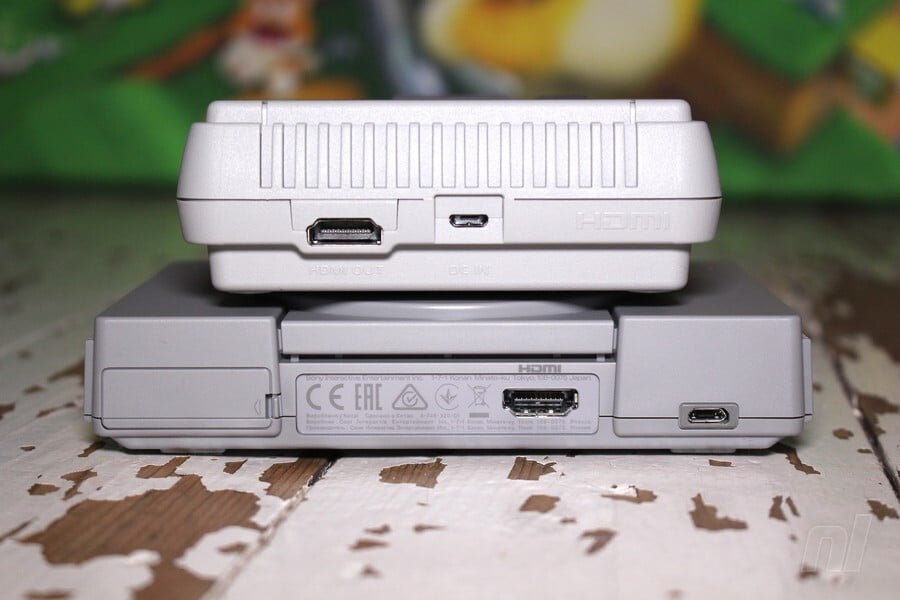
Given that both of these machines utilize software emulation to replicate the original hardware, it is by no means a given that they'll be 100 pct faithful to the existent matter – the accuracy of pure software emulation varies massively, even with the ability of modern hardware. The off-the-shelf nature of the components used naturally ways the software side of things has to be fine-tuned to extract every bit much performance as possible, and that's precisely what Nintendo did with the SNES Classic Edition; Nintendo'south European Research & Evolution (NERD) created a bespoke set of emulators which run not only standard SNES games, only as well titles which used the same Super FX bit, as well every bit other enhancement hardware. By adopting this approach, Nintendo has been able to create an incredibly accurate level of emulation.
Sony, in comparison, has taken a slightly different strategy. Rather than create its own emulation software for the PlayStation Classic, it has licenced the pre-existing PCSX ReARMed, which is an ARM port of the pop PCSX emulator. Sony therefore avoids the cost of developing its own emulator from scratch – a task that should never exist taken lightly, especially when working to a tight product deadline – and gets a tested and proven piece of software.
The issue, as discussed at length past our friends over at Digital Foundry, is that PCSX ReARMed isn't the most authentic emulator available. Sure, it offers decent performance on relatively humble ARM-based devices, just if you look (and listen) close enough, you'll spot plenty of visual and audio inconsistencies that weren't nowadays on the original console. To make matters worse, Sony has used the 50Hz PAL versions of some games, which – when you consider that the panel outputs at 60Hz – creates an ugly 'judder' consequence. Digital Foundry does a much better job than nosotros could ever hope to do when it comes to explaining this sorry state of affairs, just the ultimate decision is that the PlayStation Classic presents these games in a way which leaves much to be desired.
It'southward reasonable to expect some slight variances between the PlayStation Classic and the original hardware; emulation, every bit nosotros've said, is rarely infallible – and you could contend that nearly players won't even observe annihilation is amiss unless both are set side-by-side. However, the performance does experience slightly off, and initially, we were tempted to put this down simply to the fact that nostalgia had perchance softened our view on these titles, making them seem worse in the cold low-cal of solar day than they did back in the '90s. However, when you play a game like Tekken 3 – which was silky-smooth on the original hardware – and find that slow frame drops arrive the mode of yous putting together those finely-honed combos, you realise that something is rotten at the heart of Sony'south execution hither, rather than your memory sugar-blanket reality.
Of grade, information technology's worth pointing out that emulating the SNES and emulating the PlayStation are ii very different challenges and even the talented individuals at NERD may have baulked at the prospect of getting an off-the-shelf SoC to reproduce the performance of Sony's 32-scrap organization to the high standard they usually expect to striking. We judge a true test of Nintendo'due south approach will come when it inevitably releases the Nintendo 64 Archetype Edition, but our gut instinct tells united states that with a little more than effort, Sony could have made a much improve chore of this. Will the average person observe, nonetheless? That'due south another question entirely.
Conclusion

It might non be tremendously surprising to find that a site devoted to celebrating Nintendo thinks yous should pick the SNES Archetype Edition over the PlayStation Archetype, but nosotros should betoken out that like a great many gamers who grew upwardly in the '90s, we owned Sony'southward car and have many, many happy memories of playing information technology. The decision we've come to hither isn't borne out of brand loyalty, but the simple fact that Sony has badly fumbled this particular release in what we can only assume was an try to keep costs down; by avoiding the expense of developing a custom emulator and licencing specific titles, information technology has ended upwards releasing a product which, while capable of offering enough of enjoyment, however feels compromised in a cracking many ways. And nosotros take no joy in stating this; as nosotros said, the PlayStation is a legendary piece of gaming hardware which is home to some of the finest pieces of software always made – it's merely a shame that Sony chose non to include more of them, and that it cut corners on emulation to nowadays its twenty games in such a lacklustre mode.
Please note that some external links on this page are affiliate links, which means if you click them and make a purchase we may receive a pocket-size percentage of the sale. Please read our FTC Disclosure for more information.
Source: https://www.nintendolife.com/news/2018/12/feature_snes_classic_edition_vs_playstation_classic_-_which_one_should_you_choose
0 Response to "Playstation Classic Copying Nintendo Again Sony"
Post a Comment